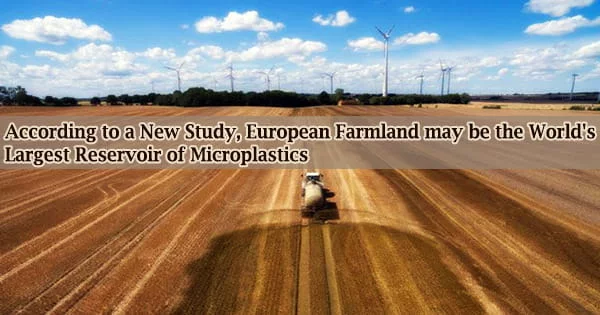According to new research, the high amounts of microplastics identified in fertilizers derived from sewage sludge on Europe’s farmlands might make it the world’s largest reservoir of microplastics.
Microplastics are applied to European soils in amounts ranging from 31,000 to 42,000 tonnes (or 86-710 trillion microplastic particles) every year, according to Cardiff University scientists, mirroring the concentration of microplastics observed in ocean surface waters.
Microplastics extracted from raw sewage at wastewater treatment plants are estimated to make up about 1% of the weight of sewage sludge, which is commonly used as a fertilizer on farms across Europe, according to a study published in the journal Environmental Pollution.
With 500-1000 microplastic particles per square meter of agricultural land applied every year, the UK was found to have the largest potential for microplastic contamination in its soils, followed by Spain, Portugal, and Germany.
Sewage sludge is widely utilized on agricultural land in Europe as a sustainable and renewable source of fertilizer, thanks in part to EU laws that encourage sewage sludge to be diverted from landfill and incineration and instead used for energy production and agriculture.
Microplastics deposited on fields will eventually find their way back into natural waterways via surface water runoff or groundwater infiltration.
Microplastics, which are less than 5mm in size and can carry contaminants, toxic chemicals, and hazardous pathogens, pose a significant threat to wildlife because they are easily ingested and can carry contaminants, toxic chemicals, and hazardous pathogens, potentially affecting the entire food chain.
“Our research questions whether microplastics are in fact being removed at wastewater treatment plants at all, or are effectively being shifted around the environment,” said lead author of the study James Lofty, from Cardiff University’s School of Engineering.
“A clear lack of strategy from water companies to manage microplastics in sewage sludge means these contaminants are transported back into the soil and will eventually return to the aquatic environment.”
The researchers took samples from the Nash Wastewater Treatment Plant in Newport, South Wales, which handles sewage from a 300,000-person population.
Our research questions whether microplastics are in fact being removed at wastewater treatment plants at all, or are effectively being shifted around the environment. A clear lack of strategy from water companies to manage microplastics in sewage sludge means these contaminants are transported back into the soil and will eventually return to the aquatic environment.
James Lofty
The treatment plant was shown to be 100 percent successful in eliminating big microplastic particles, ranging in size from 1 to 5 millimeters, from incoming sewage that would otherwise be released into the aquatic environment.
It was discovered that each gram of sewage sludge included up to 24 microplastic particles or around 1% of its weight.
Using numbers from the European Commission and Eurostat on the use and application of sewage sludge as fertilizer across Europe, this data was then used to analyze the impact.
The overall concentrations are likely to be far greater than the researchers’ predictions because they did not examine microplastics smaller than 1mm in size.
“Our results highlight the magnitude of the problem across European soils and suggest that the practice of spreading sludge on agricultural land could potentially make them one of the largest global reservoirs of microplastic pollution,” James Lofty continued.
There is currently no European regulation that limits or regulates microplastic input into recycled sewage sludge-based on microplastic loads and toxicity. Increased standardized monitoring of microplastic concentrations in sewage sludge and agricultural soils should be pursued in order to obtain a more accurate picture of contamination levels in soils across Europe.
Cardiff University led the study and included academics from the University of Manchester.





